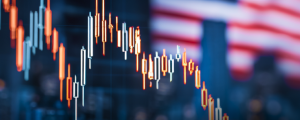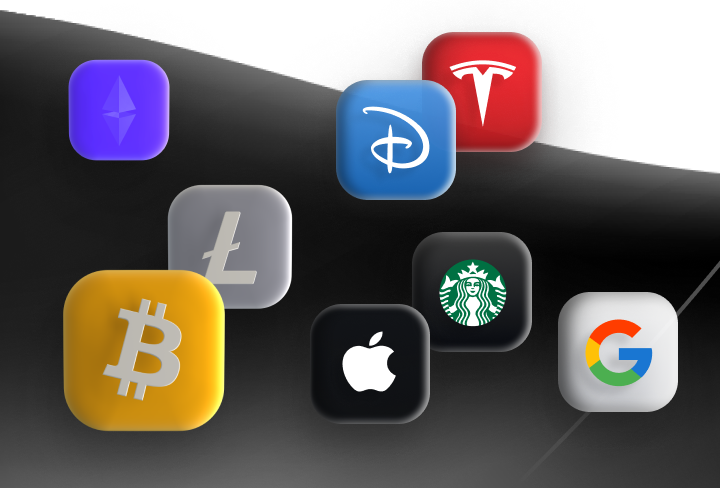For a traditionally more reserved instrument like gold, any gains are usually modest and well spaced over time. The yellow metal's more than doubling in price over the past 18 months has taken the market somewhat by surprise, to say the least. Indeed, from a level of $1,821.38 per Troy ounce on this date exactly two years ago (16 October 2023), gold has just reached a new all-time high of $4,241.48 and shows no signs of slowing anytime soon. Buying demand remains strong among both central banks and financial institutions, while more and more ordinary retail traders are also taking a newfound interest or otherwise expanding their existing holdings amid precious metal returns that have outperformed even the stock market this year.
Of course, it is well known that gold is the classic stable asset, and its attractiveness is growing all the more in the absence of any suitable alternatives. The Federal Reserve's recent shift to more dovish monetary policy is also driving demand, as lower yields make already out-of-favour fiat even less alluring. Ordinarily, we'd also see increased stock market interest, but the all-out trade war between the world's two biggest economies and general economic and geopolitical uncertainty in the US and beyond are muting demand for riskier asset classes. In this article, we'll look at how all these factors and more are shaping the gold market in 2025, as we look to where prices could be headed in the new year.
Loss of currency
While the growth in the gold price has certainly been spectacular, it didn't occur in a vacuum. Demand for the yellow metal has surely been driven up by global insecurity and sticky inflation, but the nearly triple-digit annual gains are the result of the combination of these factors with the continued decline of fiat currency as a store of wealth. Even traditional haven currencies like the US dollar, Japanese yen and Swiss franc have become less attractive amid record high debt-to-GDP ratios and revolting bond yields. Despite the fact that the US 10-, 20-, and 30-year Treasury note yields are all above 4%, capital doesn't seem to be ready to give up gold for the paper promises of fiat.
Every G10 note is now being questioned, and the "global debasement trade" is no longer some fringe slogan but rather evidence of global capital's panic upon realising that the fiscal arithmetic no longer adds up. It's true that central banks across the world have been stockpiling gold for some time after seeing what the "rules-based international order" can do to the fiat reserves of countries it deems problematic. And while this has certainly played a part in gold's rally over the past 2-3 years, the bull market of these past 12 months has the smell of real money about it. As Stephen Innes of SPI Asset Management writes: "[markets are beginning to see] inflation not as an event, but as a strategy. Investors are starting to price in what policymakers won't say out loud: debt will be inflated away." In this context, it's unsurprising that investors prefer real assets over fungible, inflationary fiat, and with many not quite ready for crypto, gold is the natural choice, and it will remain in demand for some time.
Lack of alternatives
Gold is well known as an inflation and volatility hedge, and there has surely been some of this sort of buying involved in the recent rally. However, the rapid and atypically high gains in the gold price this year have also undoubtedly been driven by speculative purchasing. The lower-interest-rate policy initiated by the Fed back in August 2024, which has seen rates drop from 5.5% then to 4.25% today, should favour riskier assets like stocks. And yet, the S&P 500 and Nasdaq 100 have only managed 14.7% and 22.7% gains, respectively, over the past 12 months, while the traditionally more reserved gold has managed 57.5% over the same period.
There are multiple reasons for this, but chief among them remains the ongoing geopolitical uncertainty embodied by the now full-on trade war between the US and China. China announced expanded export controls on its vital rare earth minerals stocks, while the US has threatened 100% tariffs and new curbs on "all critical software" in retaliation. Add to this the reciprocal port fees of $50 per tonne, which enter into force in mid-October, and the situation worsens. US tech will surely be the worst hit, and, with much of the US stock market now carried by the Mag 7, we have to expect equities to remain stifled. But stocks' loss will almost certainly be gold's gain, especially when we consider the additional rate cuts planned by the end of the year. The US regulator is tipped to cut its rate at least two more times this year, which will bring its funds rate below 3.8% for the first time since the pandemic. And with capital not having many other places to go, the yellow metal will likely see even more influx as the opportunity cost of ownership falls even lower.
Trade gold and more CFDs with Libertex
With Libertex, you can trade CFDs on a wide variety of assets from stocks, ETFs and indices to crypto, options and, of course, commodities. In addition to CFDs on gold (XAU/USD) and silver (XAG/USD), Libertex also offers CFDs on a varied range of other commodities. For more information or to create a live trading account of your own, visit www.libertex.org/signup today!






